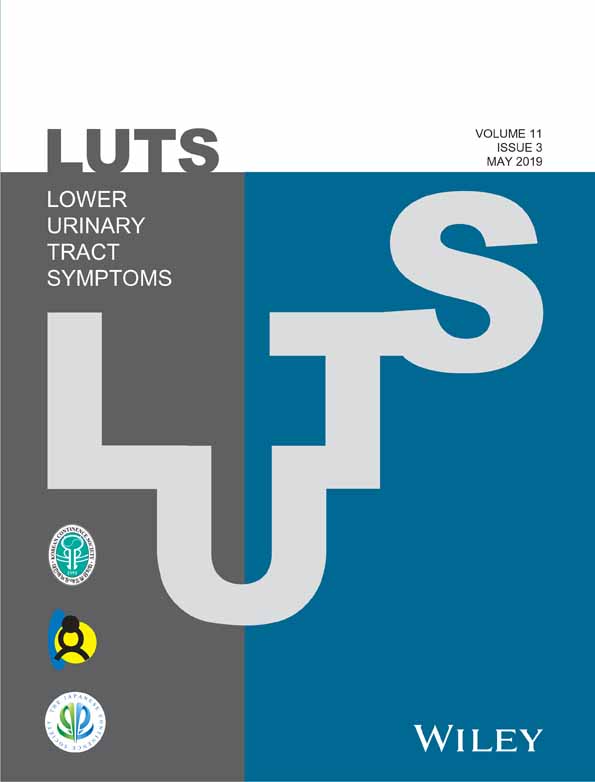Postoperative cystogram findings predict recovery of urinary continence after robot-assisted laparoscopic radical prostatectomy
Abstract
Objectives
To assess the association between postoperative cystogram findings and subsequent outcomes on urinary continence after robot-assisted laparoscopic radical prostatectomy (RALP).
Methods
A retrospective review of 250 consecutive patients who were observed for at least 12 months after RALP. The postoperative cystogram findings examined were: the location of the bladder neck, degree of bladder abnormalities, and presence of outflow of contrast medium into the urethra during the filling phase of cystography. The continence status based on pad usage was recorded. Those who required no pad or only a safety pad were defined as continent.
Results
Patients with a bladder neck location above the middle of the pubic symphysis height exhibited significantly higher continence levels than those with a lower bladder neck location at both postoperative 3 and 12 months (P < 0.0001 and P = 0.0002, respectively). The higher a bladder neck was located, the earlier the urinary continence was achieved after RALP (P < 0.0001). Patients without contrast outflow into the urethra during cystogram demonstrated a significantly more favorable continence status at the 3-month follow-up (P = 0.004). Patients without bladder abnormalities on postoperative cystogram demonstrated a significantly more favorable continence status at the 12-month follow-up than those with bladder abnormalities (P = 0.01).
Conclusions
Postoperative cystogram findings may predict recovery of urinary continence after RALP.




